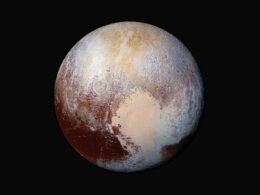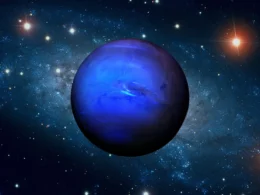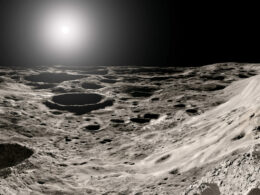Saturn, the sixth planet from the sun, is known for its stunning rings and numerous moons. But how many moons does Saturn actually have? Astronomers have been studying Saturn and its moons for centuries, and the answer to this question has evolved over time.
As of January 2024, Saturn has 146 confirmed moons, making it the planet with the most known moons in our solar system. These moons range in size from the massive Titan, which is larger than the planet Mercury, to tiny moonlets just a few kilometers across. Each of these moons has its own unique features, history, and scientific significance.
The study of Saturn’s moons has been a fascinating area of research for astronomers and scientists alike. From the discovery of Titan by Christiaan Huygens in 1655 to the recent exploration of Enceladus by the Cassini spacecraft, the study of Saturn’s moons has revealed a wealth of information about the planet and our solar system as a whole.
Saturn’s Moons Overview
Discovery and Naming
Saturn is known for its impressive collection of moons, with the number of confirmed moons totaling at 146 as of January 2024. The first moons of Saturn were discovered by Galileo Galilei in 1610, and since then, many more have been discovered through various methods such as ground-based telescopes, space probes, and the Hubble Space Telescope.
The moons of Saturn are named after characters from Greek and Roman mythology, as well as giants from the Norse tradition. The seven largest moons, including Titan and Rhea, were named after the Titans, who were the brothers and sisters of Saturn in Greek mythology. The other moons were named after various other mythological figures, such as Enceladus, Tethys, and Dione.
Categories of Moons

Saturn’s moons can be categorized into two main groups: irregular moons and regular moons. Irregular moons are those that have highly eccentric orbits and are thought to have been captured by Saturn’s gravity. On the other hand, regular moons have more circular orbits and are thought to have formed along with Saturn itself.
The regular moons can be further divided into three categories based on their location relative to Saturn: the innermost moons, the mid-sized moons, and the outermost moons. The innermost moons are those that orbit closest to Saturn, while the mid-sized moons are located further out. The outermost moons are those that orbit the farthest from Saturn.
One of the most interesting moons of Saturn is Titan, which is the largest moon and the only natural satellite in the solar system with a thick atmosphere. Another interesting moon is Enceladus, which has a global ocean beneath its icy shell and is thought to have the potential for life. These two moons are considered high-priority science destinations for future deep space missions.
In conclusion, Saturn’s moons are a fascinating topic of study, with their discovery and naming rooted in mythological tradition and their categorization based on their location and orbit. The irregular and regular moons of Saturn, including Titan and Enceladus, continue to capture the attention of scientists and space enthusiasts alike.
Physical Characteristics
Saturn is the sixth planet from the Sun and is known for its iconic rings, but it is also home to a vast number of moons. Saturn has 146 moons in its orbit, making it the planet with the most moons in our solar system. These moons range in size from larger than the planet Mercury – the giant moon Titan – to as small as a sports arena.
Composition and Surface
Saturn’s moons are composed of a variety of materials, including rock, ice, and organic compounds. The largest moon, Titan, has a thick atmosphere made up of nitrogen, methane, and other gases. It also has lakes and seas of liquid methane and ethane on its surface, making it the only other body in our solar system besides Earth with liquid on its surface.
The small moon Enceladus has a global ocean under a thick, icy shell. Scientists have identified both moons as high-priority science destinations for future deep space missions. Enceladus is of particular interest because of its geysers, which shoot water vapor and other materials into space. This makes it a prime candidate for studying the potential for life beyond Earth.
Orbital Patterns
Saturn’s moons have a wide range of orbital patterns. Some moons orbit close to the planet, while others orbit far away. Some moons even share the same orbit, which is known as a co-orbital configuration. The moons’ orbits are also influenced by Saturn’s rings, which exert a gravitational force on the moons.
In conclusion, Saturn’s moons are a diverse collection of bodies that offer a wealth of scientific knowledge. From the icy geysers of Enceladus to the lakes of Titan, each moon has its own unique characteristics that make it a fascinating subject of study.
Exploration and Research
Telescopic Observations
The first observations of Saturn’s moons were made using telescopes in the 17th century. Christiaan Huygens discovered Titan, the largest moon of Saturn, in 1655. Since then, astronomers have used telescopes to observe and study Saturn’s moons. The Hubble Space Telescope has been particularly useful in observing and discovering new moons of Saturn.
Space Missions
The exploration of Saturn’s moons has been greatly enhanced by space missions. The Cassini spacecraft, launched in 1997, orbited Saturn for 13 years and provided detailed data on the planet and its moons. The spacecraft discovered several new moons and provided detailed images and measurements of the known ones. The Huygens probe, which was carried by Cassini, landed on Titan and provided the first direct measurements of the moon’s atmosphere and surface.
Scientific Studies
The data collected by telescopes and space missions has allowed scientists to study Saturn’s moons in great detail. Scientists have been able to determine the composition, structure, and history of the moons. For example, the small moon Enceladus has a global ocean under a thick, icy shell. Scientists have identified both Enceladus and Titan as high-priority science destinations for future deep space missions.
In conclusion, the exploration and research of Saturn’s moons has been greatly enhanced by telescopic observations, space missions, and scientific studies. The data collected has allowed scientists to study the moons in great detail and has provided insights into their composition, structure, and history.
Frequently Asked Questions
What is the confirmed number of moons orbiting Saturn?
As of 2023, Saturn has at least 150 moons and moonlets in total, according to Universe Today. However, only 62 of these have confirmed orbits, and only 53 have been given official names.
Are there any new discoveries of moons around Saturn in recent years?
In May 2023, the International Astronomical Union (IAU) officially recognized 62 new moons orbiting Saturn, bringing the total to at least 150 moons and moonlets, according to HowStuffWorks. These new discoveries mark significant milestones for the ringed planet.
What are the names of the largest moons of Saturn?
The largest moon of Saturn is Titan, which is larger than the planet Mercury. The second-largest moon is Rhea, followed by Iapetus, Dione, and Tethys. These five moons are often referred to as the “major moons” of Saturn, according to NASA Science.
How do the moons of Saturn vary in size and composition?
The moons of Saturn vary greatly in size and composition. Titan, for example, is larger than the planet Mercury and has a thick atmosphere of nitrogen and methane. Enceladus, on the other hand, is a small moon with a subsurface ocean and geysers of water vapor and icy particles. The moons of Saturn are generally composed of rock and ice, with some containing more rock than others, according to NASA Science.
What are the processes involved in discovering new moons around planets like Saturn?
Discovering new moons around planets like Saturn typically involves using telescopes to search for faint objects in the planet’s orbit. Once a potential moon is identified, astronomers use additional observations to determine its orbit and confirm its existence, according to NASA Science.





